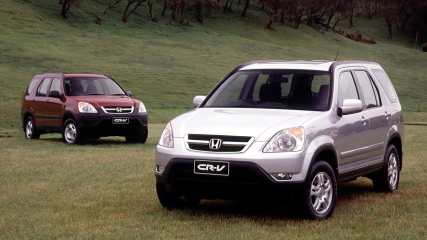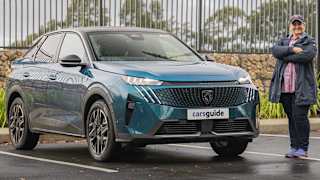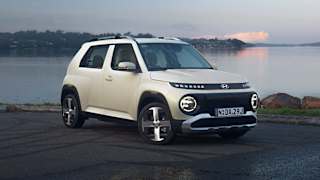Honda CR-V 2007 review: road test
By Mark Hinchliffe · 06 Feb 2007
Like so many softroaders these days, it gets a 5 per cent import duty advantage because it's a four-wheel drive.Yet the third-generation of the 10-year-old model makes no pretence at being anything other than a street-wise "mum's taxi", far removed from the commercial vehicle for which the duty allowance is intended.The national launch in Launceston this week included more than 300km of Apple Isle roads and not one bit of gravel, Honda Australia PR manager Mark Higgins promised.Apart from a short piece of roadworks and the gravel driveway to the isolated Barnbougle Dunes golf links (the world's 48th best links, according to Golf Magazine), he was right.The new CR-V arrives just marginally wider, but shorter because the spare wheel has been taken off the back door. The gimmicky picnic table has now been replaced by the spare under the cargo floor.Now made in Thailand, Honda has been able to significantly upgrade specifications including electronic stability control across the three-trim range, without increasing prices above the previous model, prior to the run-out specials.The base model starts at $31,990 for the six-speed manual, the Sport is $37,490 and the Luxury is $39,990. Add $2000 for the five-speed auto where the conventional handbrake is replaced by a foot-operated brake.The Sport gets alloy wheels, a six-stacker sound system and dual-zone air-conditioning, while the Luxury adds leather upholstery, heated front seats, electric driver's seat and reverse parking sensors. There is no badging on the outside to distinguish the different trim levels.With modifications to the suspension and steering, a stiffer body and chassis, 20mm less clearance and 35mm lower centre of gravity thanks to the relocation of the spare, the vehicle now has perhaps the most sedan-like handling characteristics of all compact sports utility vehicles.Despite the softer, more rounded coupe-like look, the absence of the rugged spare on the back and the lower, wider stance, CR-V project leader Mitsuru Horikoshi said the new model had a "tough image".The picnic table may be gone, but who is he kidding?Outside, the CR-V has undergone a gentrification from the very square, almost Defender style of the 1997 original.The second generation from 2001 had a few more curves, bigger headlights, more torque and all-wheel-drive upgrade.The third generation gets a very curvaceous and aerodynamic exterior, plush interior, wider tyres, a flatter torque curve and another AWD upgrade.Celebrating its 10th birthday this year, the CR-V has sold more than 2.5 million in 160 countries and has 90,920 Australian owners.It is not difficult to understand why. It is an economical, practical package that is well styled, easy to drive and attractive.On the road, the new CR-V immediately feels nippier in town thanks to the extra 7kW of power and flatter torque curve.However, when we hit the highway and the hills, the typically high-revving Honda engine becomes a bit noisy, without any real oomph. Passing becomes a matter of planning rather than spontaneity.Wind and road noise are now reduced thanks to better engine mounts, sound insulation and better door seals. I also found the Bridgestone-shod CR-V was much quieter than those wearing Michelin shoes.Ride is so much better, almost plush, yet retaining superb cornering dynamics and none of the body roll or tyre scrub of the previous model.All models now get Vehicle Stability Assist, which can quickly be switched off.The upgraded AWD system drives the front wheels until it detects slip and then engages the rear wheels.Safety has always been a hallmark of Honda with ABS, Brake Assist, Electronic Brakeforce Distribution, active headrests, better crash protection and six airbags on the Sport and Luxury models.Inside, the CR-V has had a substantial update so that it now resembles the tasty Odyssey cabin.Changes include a telescopic steering wheel adjustable for reach now as well as height, gear shift on the centre console, upgraded sound system with auxiliary jack for MP3 players and more front leg room.The CR-V has always been a magnificent interior package with plenty of space, split folding rear foldable seats and an open, airy feeling.It is now even better with more space, cup holders, clever gadgets (such as a convex mirror so parents can check on the children in the back), plus storage options such as dual-deck cargo shelf in Sport and Luxury models.This allows you to access luggage on the bottom, without having to remove luggage stored on top.Some may miss the rear door which is now replaced by a top-hinged tailgate, but at least it opens from down low, so access is easy.The new CR-V goes on sale on February 15 and is on show at the Brisbane International Motor Show. (Vehicle details in the show guide are incorrect.)













